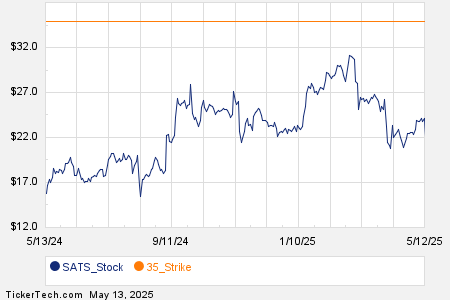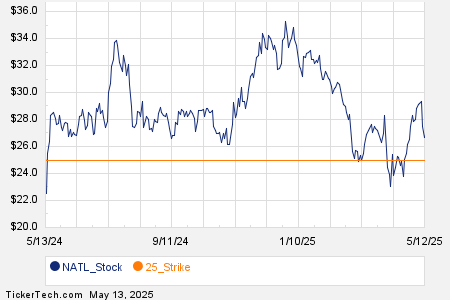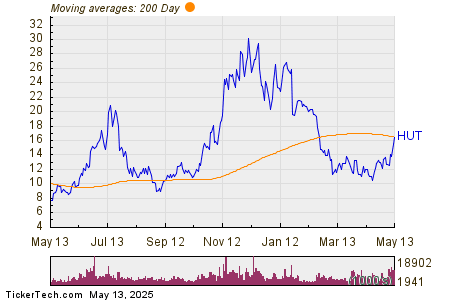Coffee Prices Rise as Brazilian Real Strengthens, Exports Decline
July arabica coffee (KCN25) is up +4.80 (+1.29%), and July ICE robusta coffee (RMN25) is up +71 (+1.41%).
Coffee Market Overview
Today’s coffee prices bounced back from earlier losses, supported by a rally in the Brazilian real (^USDBRL) to a five-week high. This rise prompted short covering in coffee futures, as a stronger real discourages Brazil’s coffee producers from selling more coffee internationally.
Additionally, reports of declining coffee exports from Brazil further buoyed coffee prices. Exporter group Cecafe indicated that Brazil’s green coffee exports fell by 28% year-over-year in April to 3.05 million bags. From January to April, exports dropped 15.5% year-over-year to 13.186 million bags.
Market Dynamics and Supply Factors
Initially, coffee prices added to losses from Monday, with arabica coffee hitting a three-week low and robusta reaching a one-month low. Concerns about larger global coffee supplies continue to pressure prices. The USDA projected that Honduras, Central America’s biggest coffee producer, will see a 5.1% year-over-year increase in coffee production for the 2025/26 season, reaching 5.8 million bags. Moreover, consulting firm Safras & Mercado raised its estimate for Brazil’s 2025/26 coffee production to 65.51 million bags, up from 62.45 million bags. Conab, Brazil’s crop forecasting agency, also increased its estimate for Brazilian 2025 production to 55.7 million bags from 51.81 million bags.
The coffee inventory landscape has shifted, with inventories monitored by ICE rising to a three-and-a-half-month high of 4,557 lots for robusta coffee. Similarly, ICE-monitored arabica coffee inventories reached a two-and-three-quarter-month high of 844,473 bags last Wednesday.
Demand Challenges and Crop Concerns
Growing demand concerns also weigh on coffee prices. Major global importers like Starbucks, Hershey, and Mondelez International stated that the U.S.’s standard 10% tariff on imports would likely increase prices and further affect sales volumes.
Conversely, worries about a smaller Brazilian coffee crop continue to provide some support for coffee prices. On April 22, Rabobank forecasted a decline in Brazil’s 2025/26 arabica coffee crop by 13.6% year-over-year to 38.1 million bags, attributing this to dry weather affecting flowering in critical growing regions.
Rainfall data reinforces these concerns. According to Somar Meteorologia, Minas Gerais, Brazil’s main arabica coffee-producing area, received only 0.8 mm of rain last week—just 16% of its historical average.
Global Production Trends
Robusta coffee has found support thanks in part to reduced production in Vietnam. The National Statistics Office reported that Vietnam’s 2025 January-April coffee exports fell by 9.8% year-over-year to 663,000 metric tons. Weather-related factors have also impacted production. Vietnam’s General Statistics Office revealed that its 2024 coffee production estimate dropped to 26.5 million bags from a December estimate of 28 million bags.
Meanwhile, Rabobank anticipates that Brazil’s 2025/26 robusta crop will see an increase of 7.3% year-over-year to a record 24.7 million bags.
Export and Inventory Reports
Recent reports of increased global coffee exports are somewhat bearish for prices. For instance, Conab indicated that Brazil’s 2024 coffee exports rose by 28.8% year-over-year to a record 50.5 million bags. Nevertheless, the International Coffee Organization (ICO) reported a decline in global coffee exports for the 2024/25 October-March period, down 2.1% year-over-year to 67.73 million bags.
Future Projections
The USDA’s biannual report released on December 18 presented mixed signals for coffee markets. It suggested that world coffee production for the 2024/25 period would increase by 4.0% year-over-year to 174.855 million bags. This includes a 1.5% increase in arabica production (97.845 million bags) and a 7.5% increase in robusta production (77.01 million bags). However, ending stocks are projected to fall by 6.6%, reaching a 25-year low of 20.867 million bags.
For the 2025/26 marketing year, Volcafe revised its Brazil arabica coffee production estimate down to 34.4 million bags, approximately 11 million bags lower than previous estimates after assessing severe drought conditions during a crop tour. Volcafe now anticipates a global arabica coffee deficit of 8.5 million bags for 2025/26, wider than the 5.5 million bag deficit expected for 2024/25.
On the date of publication, Rich Asplund did not hold positions in any of the securities mentioned in this article. All information and data presented are for informational purposes only. For more details, please view the Barchart Disclosure Policy.
here.
The views expressed in this article are those of the author and do not necessarily reflect the opinions of Nasdaq, Inc.



